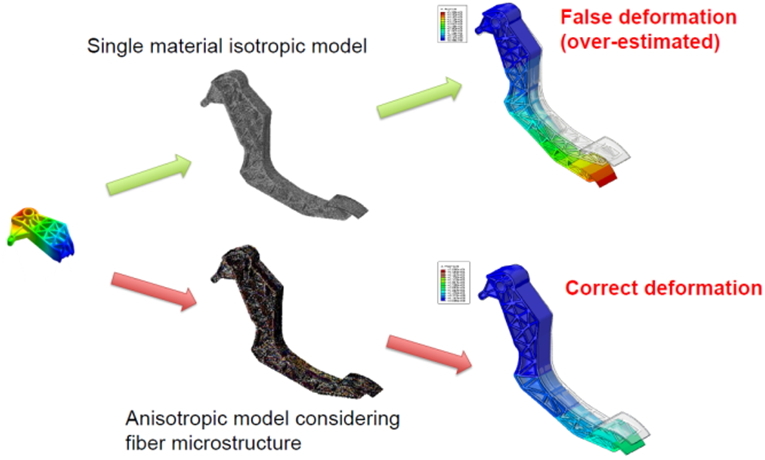Ensuring a sustainable future is one of the most important driving forces of innovation in the automotive industry. Manufacturers and suppliers are constantly racing against increasingly tighter restrictions on fuel efficiency. One innovation is the electric vehicle. However, a series of electric vehicle fires which recently erupted raises concerns about the safety and quality of battery pack designs. In view of this criticality, Moldex3D has teamed up with a major auto maker to eliminate unwanted warpage during manufacturing. In one case, the coolant flows through channels in the plastic fins surrounding the battery. The part deformation along with the long term creep behavior may result in tolerance issues, which might lead to coolant leakage. Maintaining the dimensional accuracy is critical to ensure the robustness of battery packs. Furthermore, the viscoelastic functions of Moldex3D could estimate the initial residual stress and how it relaxes throughout its lifetime. This gives part designers an invaluable tool to understand part performance through all stages of PLM.
This estimation of part reliability is just one of the automotive industry solutions introduced with the upcoming Moldex3D R13 release. Today, the biggest challenge facing automotive part makers is enhancing fuel economy through weight reduction. Using new materials including long fiber-reinforced plastics and microcellular foams opens up new possibilities, but at the same time designers also need to avoid compromising safety. This poses design challenges due to the unique microstructures and the resulting anisotropic properties of engineering materials. Therefore, Moldex3D automotive industry solutions provide complete simulation packages for users to:
- prove metal-replacement design concept
- predict the microstructure and avoid process induced defects
- conduct structural analysis considering material anisotropy and process induced defects such as weldlines
- simulate advanced processings like compression molding of glass mat thermoplastics (GMT) or resin transfer molding (RTM)
 Part performance difference considering material anisotropy
Part performance difference considering material anisotropy
Even for day-to-day applications such as determining gate location or predicting weldlines, sink marks and warpage, the automatic boundary layer mesh (Auto BLM) function in Moldex3D turns tedious preprocessing work into a streamline work flow. A larger than 5 million-element door trim BLM mesh requires only less than 4 hours to finish meshing. And the resulting high quality mesh provides both efficiency and accuracy.
The automotive industry requires the development of next-generation engineering solutions for plastic materials and processes. Moldex3D offers manufacturing simulation solutions that help automotive plastics designers and engineers resolve the complexities of part design and validation. For more Moldex3D simulation solutions for the automotive industry, please visit www.moldex3d.com
